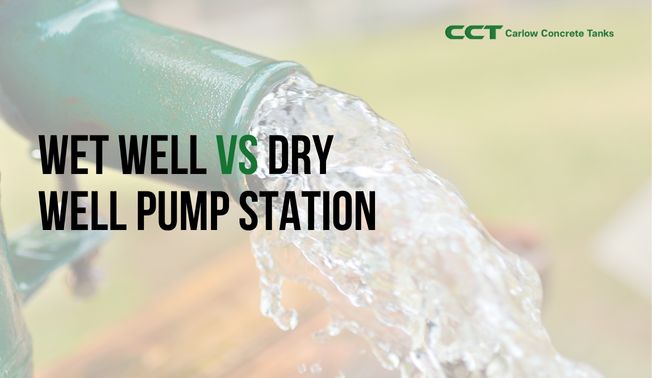If you are a home or business owner who is familiar with wastewater systems, the terms “wet well” and “dry well” undoubtedly sound familiar. The two differ in their design and functionality, but both play critical roles in the operation of wastewater collection networks. In this blog post, we will explore each type of pump station by comparing their construction, components, assigned duties, and more to help you decide which option would be best for your application. Read on to learn all about wet wells vs dry wells!
A wet well pump station utilises a submerged pump to transfer water from the well to a designated location. The water is held in the wet well until needed, then pumped out when pressure is required. Wet wells are commonly used for raw sewage and wastewater pumping. They are enclosed structures and can be customised based on the volume of wastewater that needs to be handled.
In contrast, a dry well pump station operates by using an above-ground tank that holds the wastewater or sewage until it is ready to be released into a designated disposal area. As opposed to wet wells, which have pumps submerged in water, dry wells use pumps located at the top of the tank, which draw liquid up from below and then expel it at a higher elevation than it was collected. The pumps can be powered by electricity or air pressure, depending on the specific needs of the application. Dry well pump stations are typically smaller and less expensive than wet wells, making them ideal for residential applications where a large amount of water is not necessary to be stored or processed.
Overall, both wet well and dry well pump stations have their own unique advantages and disadvantages that should be taken into consideration when deciding which type of pump station is best suited for a particular application. Wet wells provide greater storage capacity but require more complex installation and maintenance procedures compared to dry well systems.
On the other hand, dry wells are much simpler in design and do not require as much maintenance but cannot store as much liquid as a wet well system can. Ultimately, it is important to consider the specific application and weigh the pros and cons of each option before making a decision on which type of pump station would be most suitable. By taking into account the different needs and requirements of each situation, one can be sure to choose the best solution for their project.
In conclusion, the choice between wet well and dry well pump stations will largely depend on an individual’s particular need or requirement. Wet wells are great for applications that require large amounts of water, while dry wells are more suitable for situations where a smaller amount of liquid is needed. In any case, careful consideration should be taken in order to identify which type of system is best suited for a particular application. With this knowledge in hand, one can be sure to choose the best solution for their project.
We at Carlow Concrete Tanks understand the importance of proper maintenance when it comes to your pumps and tanks. Contact Us today at sales@carlowtanks.com to learn how we can help you prevent water damage to your commercial or residential property.

